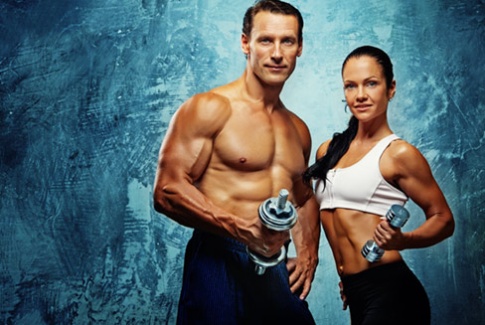The chest is a prominent muscle group that contributes significantly to upper body strength and aesthetics. For beginners embarking on their fitness journey, a well-designed chest workout routine is a crucial step towards achieving their physique goals. This article delves into the fundamentals of building a solid chest, explores the best chest workout routines for beginners, and provides valuable tips for maximizing results.

Why Chest Workouts Matter for Beginners
A strong chest offers a plethora of benefits for beginners. Here’s why incorporating a chest workout routine is essential:
- Improved Posture: Well-developed chest muscles promote better posture by counteracting the tendency of the shoulders to round forward. This leads to improved spinal alignment and reduces back pain.
- Enhanced Functional Strength: Strong chest muscles play a vital role in everyday activities like pushing, pulling, and carrying objects. A chest workout routine translates to improved functional strength for daily tasks.
- Boosted Metabolism: Building muscle mass, including in the chest, increases your basal metabolic rate (BMR), which is the number of calories your body burns at rest. This contributes to weight management and overall fitness.
- Confidence Builder: A sculpted chest can boost confidence and self-esteem, especially for beginners who are actively working towards their fitness goals.
Understanding Chest Anatomy
The chest is comprised of two primary muscle groups: the pectoralis major and the pectoralis minor. The pectoralis major, often referred to as the “pecs,” is the larger and more visible muscle on the chest. It plays a key role in pushing movements like push-ups and bench presses. The pectoralis minor, located beneath the pectoralis major, assists with shoulder movement and stability.
The Essential Elements of a Beginner’s Chest Workout Routine
A well-structured chest workout routine for beginners should incorporate exercises that target different regions of the chest while promoting proper form and preventing injuries. Here are the key elements to consider:
- Compound Exercises: These exercises engage multiple muscle groups simultaneously, maximizing efficiency and promoting overall upper body development. Examples include bench press, push-ups, and dumbbell rows.
- Isolation Exercises: These exercises target specific muscle groups, allowing for focused development of the chest muscles. Examples include dumbbell flyes and cable crossovers.
- Warm-up and Cool-down: A proper warm-up is crucial for preparing the muscles for exercise and preventing injuries. Likewise, a cool-down helps your body recover and reduces muscle soreness.
- Progression: As you gain strength and endurance, gradually increase the difficulty of your chest workout routine. This can be achieved by increasing weight, sets, reps, or incorporating more advanced exercises.
- Rest and Recovery: Allow your body adequate rest and recovery time between chest workouts. This is essential for muscle growth and preventing overtraining.
Sample Chest Workout Routines for Beginners
Routine 1: Bodyweight-Focused (No Equipment Needed)
This routine is perfect for beginners who are just starting their fitness journey or lack access to gym equipment.
Warm-up (5 minutes): Light cardio like jumping jacks, jumping rope, or jogging followed by dynamic stretches.
- Push-ups: 3 sets of 8-12 repetitions (modify by doing incline push-ups against a wall or knee push-ups)
- Dips: 3 sets of as many repetitions as possible (can be done on a sturdy bench or chair)
- Diamond Push-ups: 3 sets of 8-12 repetitions (narrow hand placement targeting the triceps and upper chest)
- Plank: 3 sets of 30-60 seconds hold
Cool-down (5 minutes): Static stretches focusing on the chest, shoulders, and triceps.
Routine 2: Gym-Based (Focuses on Compound and Isolation Exercises)
This routine utilizes gym equipment for a more progressive chest workout routine. Beginners should start with lighter weights and prioritize proper form.
Warm-up (5 minutes): Light cardio followed by dynamic stretches.
- Barbell Bench Press: 3 sets of 8-12 repetitions
- Dumbbell Incline Press: 3 sets of 8-12 repetitions
- Dumbbell Flyes: 3 sets of 10-15 repetitions
- Cable Crossover: 3 sets of 12-15 repetitions
Cool-down (5 minutes): Static stretches focusing on the chest, shoulders, and triceps.
Progression Tips for Your Chest Workout Routine
As you become more comfortable with the exercises and feel your strength improving, consider these progression tips to keep challenging your chest muscles:
- Increase Weight: Gradually increase the weight lifted in compound exercises like bench press and dumbbell press.
- More Sets and Reps: Once you can comfortably perform the recommended sets and reps, increase the number of sets or
